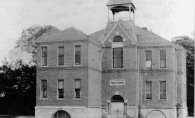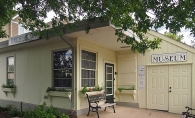One of the first women to attend the University of Minnesota in the 1870s, Abbie Wakefield proudly wore long trousers and bloomers, which were made popular by Amelia Jenks Bloomer and marked a liberated woman. Her peers were shocked, but when the 19th Amendment was ratified in 1920, giving women the right to vote, no one was surprised that she’d be first in line to vote. Wayzata had no voting booths, so Wakefield called the fire department to take her to vote at Minnetonka Mills. After all, this was an emergency.
Fashion, dancing and music made Lake Minnetonka a great place to party, even in its early days. Most women in the 1870s didn’t dare wear those daring bloomers, but stuck to stuffy hoop skirts and constricting corsets, even if doctors predicted “gland trouble,” liver problems or even death from wearing them. Despite the scandal associated with bloomers, doctors preferred them, or knock-offs like knickers (short for “knickerbockers”). These newfangled fashions fit the dynamic new lifestyle of the lake when roller skating took the area by storm in 1877. “Parlor skates have at last reached Minneapolis,” according to the Minnetonka Tourist of 1877. “J.H. Fenton, of New York, has leased a hall and announces a reception on the 18th.” Tonka Bay and other areas on the lake simply had to have roller rinks.
On the beach in those days, though, there was ne’er a bikini or Speedo in sight: Both women and men kept covered, even in the water. “The women wore Mother Hubbards and the men used everyday pants,” author Blanche Wilson wrote. “Swimming was done dog fashion, and nobody’d ever heard of diving.”
Just as some strove to stay out of the limelight, others basked in the attention. A man in Excelsior avoided getting wet altogether and looked back to Leonardo DaVinci’s creation of “watershoes.” His version of the Italian invention were essentially long wooden boards strapped on his feet, with zinc fins underneath so he wouldn’t just tumble into the drink. In 1880, he walked on water all the way from Excelsior to Wayzata. While his feat made the papers, some joked that he would have had a much easier and quicker time if he just walked all around the twisting shoreline.
These shenanigans demanded attention. As the lakeshore developed, some of the projects were wholesome, like Wayzata’s picnic grounds west of town, with a croquet pitch, a dancing stage and a “victualizing stand” with fresh ginger pop. Others were cruel, like Excelsior’s display in 1880 of an Eskimo girl brought to town so visitors could observe her.
By far, the preferred entertainment was dancing. In 1873, the Excelsior Commons boasted an elevated stage so locals could dance cheek-to-cheek, but some of the more prudish in the area viewed the whole spectacle “as pretty disgusting since it gave aid and comfort to those males who had an eye for a shapely ankle,” according to Thelma Jones’ Once Upon a Lake. Many of the anti-dancing crowd were likely the Prohibitionists who questioned this bawdy merrymaking that was perhaps stirred by demon drink.
The dancing couldn’t be stopped. In 1912, “a wave of the ‘Bunny Hug’ and the ‘Turkey Trot’ swept dance halls of the nation,” according to The Early Background of Minnetonka Beach by Bergmann Richards. That same year, a committee of the board of governors of the Lafayette Club met “to restrict as far as possible the introduction of new and objectionable dances at the club house.” In spite of efforts to control the foxtrots, the ballroom caught fire on June 18, 1922, and burned to the ground, killing two young women inside. Surely the Victorians predicted this kind of catastrophe, especially after such radical fashions as bloomers broke down all barriers.









